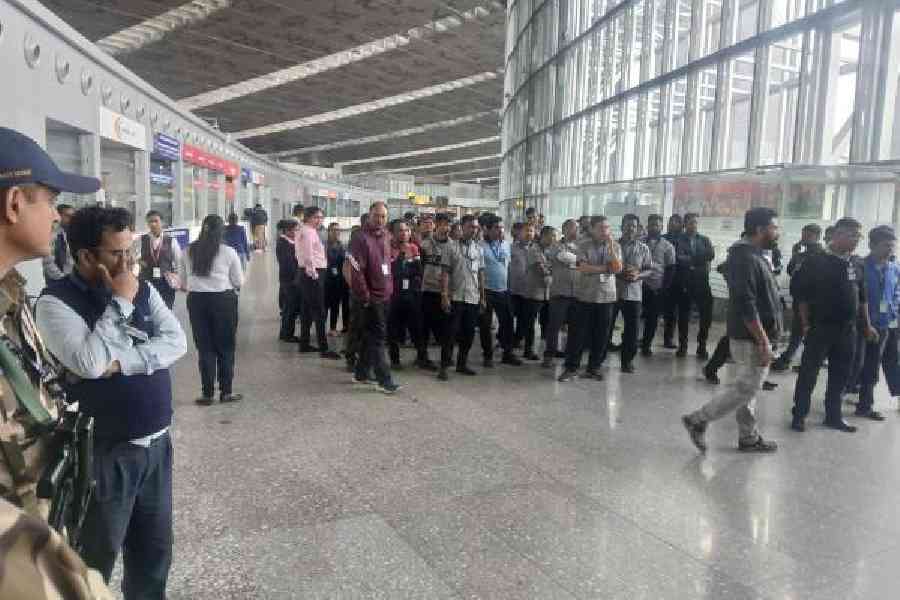 |
When Vishal Ogle left his drought-hit village in Maharashtra two years ago for Surat in Gujarat, all that he had was the address of a friend who worked at one of the city’s several thousand diamond polishing units. “I was on the verge of suicide without any work for months,” says the former small-time farmer. “A friend who was in Surat said he could find me a job.”
Reed-thin and small-built, 22-year-old Ogle today spends 10 hours squatting and feverishly polishing 40-60 diamonds a day in a factory in the Mahidharpur area of the city, earning Rs 6,000-7,000 a month. “I have earned even more, depending on the number of diamonds I polished in a day,” he says, munching a Gujarati snack at a roadside shack near his unit.
But for Ogle, the work has already lost its shine: after two years in the profession, he is thinking of abandoning his polishing tools in search of better work and pay. “My friends who have left the industry are earning more and I don’t see my wages rising. I hope to find some other work very soon,” he says.
That is bad news for Surat’s diamond cutting and polishing industry which, after recovering from two years of a contraction in growth, is now facing an increasing shortage of workers. The city, which has 4,000 diamond cutting and polishing units, employs 4-5 lakh workers. But experts estimate that it needs one lakh cutters and polishers to meet new demands from global markets.
“The industry is in the black again, But what we want now are more hands to cut and polish,” says Dinesh Navadia, president, Surat Diamond Association (SDA), an organisation of diamond unit owners. Diamantaire Navadia says his company alone needs about 100 workers.
India exported more than Rs 75,000 crore worth of cut and polished diamonds from April to November, 2010, according to the Gems and Jewellery Exports Promotion Council of India, a body established by the union ministry of commerce and industry. This marked a 45 per cent jump from exports in the same period in 2009. Around 70 per cent of the exports are from Surat alone.
“We went through a very rough phase in late 2008 and almost the whole of 2009, but, thank God, Surat is back to where it once belonged,” says Chandrakant Sanghavi, chairman of Sanghavi Exports, which employs around 2,700 workers.
 |
| POLISHED OFF: Surat is facing a drought of diamond polishers |
With the industry back on track, it’s not uncommon for city diamantaires to drive their gleaming Mercedes Benzes and BMWs all the way to Mumbai to catch flights to Antwerp, New York, Hong Kong and other international markets with polished gems tucked away in their trunks. Despite its bustling industry, Surat is connected only to Delhi by one Air India flight a day.
For the workers, though, life is vastly different. Men who handle stones worth lakhs of rupees work in huge halls sitting around machines in small circles. Three or four people live in a tiny room. And low wages have been prompting them to look elsewhere for jobs.
The industry is worried about the shortage of workers, for it sees a rise in the demand for polished diamonds in the coming years. Yet insiders stress that the shortage is not a simple case of demand and supply. “It’s a complex issue,” holds K.K. Sharma, executive director, Indian Diamond Institute, Surat. “While on the one hand the industry says there is a shortage, on the other hand workers claim they are not being paid well. On top of it industry people say profit margins have been plummeting for some years now,” he says.
A recent call for industrial action by a group of diamond workers in Surat demanding higher wages brought this “complexity” to the fore. “We read in the papers that diamond unit owners are happy with the increasing demand internationally, but we ask them for a little hike in wages and they simply refuse to hear our side,” says Mitesh Rakholia, a 25-year-old worker who was fired after he joined a protest march.
The industry has a different take on the subject. “Many of the workers are recent recruits, and we cannot pay them very high wages. We also cannot ask them to handle high worth diamonds because of their inexperience,” says Navadia.
Traditionally, the Surat diamond industry always depended on Bhuj and other areas in southern Gujarat for a steady flow of workers. “The Saurashtra region provided us with workers generation after generation, but that’s not happening any longer. The young are now educated and don’t want to follow their fathers,” says Navadia.
The industry had started recruiting a small section of workers from states such as Maharashtra, Bihar, Orissa and Uttar Pradesh. But now they too have been finding work in their own states, with jobs generated by various government schemes.
The large-scale retrenchment during the recession has also turned many workers against the industry. Many were forced to return to their villages after around 1,400 units downed shutters. An estimated 1.5-2 lakh workers lost their jobs during this time.
“The recession had a psychological impact on people who’d worked for decades in our industry. Many went back to their villages, while some shifted to other industries,” says Rohit Mehta, vice-president of the Southern Gujarat Chamber of Commerce and Industry, also a Surat-based manufacturer and wholesaler of diamond jewellery and solitaires.
A large section of the workforce from the diamond industry joined the embroidery industry during the slump. Since it was better paying, many stayed back even when the diamond industry started wooing back workers.
Alpesh Gajera, a 26-year-old former diamond polisher now working in an embroidery unit, says he will never return to his former profession. A worker in the city’s embroidery units earns between Rs 8,000 and Rs 12,000 a month.
According to Mehta, the diamond industry needs to “re-kindle the dream” of every diamond worker of becoming an owner of a diamond polishing unit one day. “Many of today’s top diamantaires began as diamond polishers themselves. I think our workers somehow need to be motivated,” he says.
But Gajera doesn’t have any such dreams. “I spent more than four years as a diamond polisher, but I was asked to leave along with 60 other workers. It happened just like that,” he says clicking his fingers. “I don’t want that to happen again.”
The global situation has added a new dimension to the issue, say industry insiders. “If you look at the price of rough diamonds, it has increased by almost 30 per cent in the last three years. But the prices of polished diamonds have remained almost the same, narrowing our profit margins,” says Sanghavi. That’s one reason why wages haven’t gone up, he says.
The SDA, however, has asked its members to increase workers’ wages by 15-20 per cent. Diamantaires say they are also trying to find innovative solutions. According to Navadia, the association has organised training programmes in southern Gujarat for tribal youths. “We are also bringing interested youths to Surat for free training for two months. We lost a generation of workers who had an emotional attachment to the diamond industry. We now need to re-build such a workforce,” he says.
But that’s easier said than done. For people like Ogle, there are greener pastures elsewhere.










